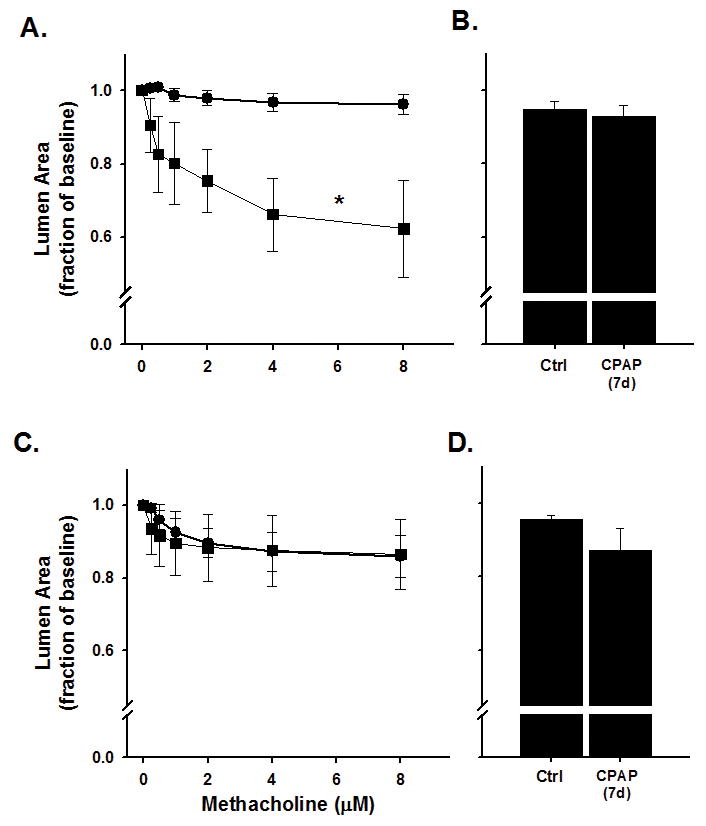Figure 1.

Airway (AW) responses to methacholine challenge in the in vitro living lung slice preparation from ~8 day old (A–B) male and (C–D) female mice that received 7 days of neonatal (P1-7) CPAP (6cmH2O). CPAP (square symbols) increased small AW (A) responses to methacholine in males compared to Ctrl mice (circle symbols), whereas larger AWs (B) were not affected by CPAP. In contrast, neither the small (C) or large (D) AWs of female mice were affected by CPAP. Values in A and C are “small” AWs defined as a baseline lumen area <4000 pixels; “large” AWs (B and D) defined as baseline lumen area >4000. B and D are the response to maximum (8μM) methacholine. *indicates significant difference in the slope of the response between Ctrl and CPAP animals (N=7–10 airways from 4–5 mice/group; p<0.05).
